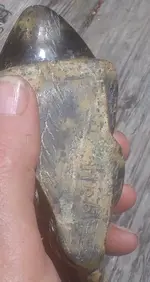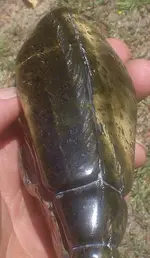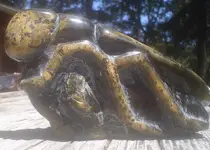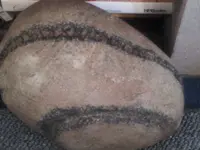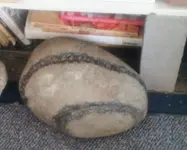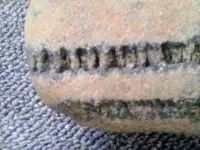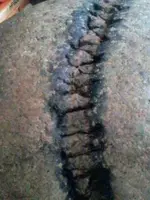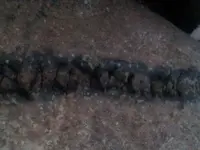When I found this rock, there was no question it was natural. (1994 with a large group of rock hounds on a field trip)
It looked very similar to op's rock ... in the rough. Only the "stitching" seemed unique and of interest.
The rest of the rock didn't seem to have any potential. (I wanted carving rock)
Later, I tried to cut the stitching down so it would lie flat with the other rock and possibly offer a clue to its formation.
Was surprised to find the rock not only carved well, but took a decent polish.
(it's softer than granite or basalt, ... but harder than serpentine. Was very familiar with serpentines, never saw a serpentine like this ... but, it carves just slightly harder than serpentine, and polishes very similar ... don't think it's serpentine, only mention it because it carved similar.)
Was surprised to find the deep stitching, as seen in op's rock, took on a
very distinct pattern as I ground the rock down. My intent was to smooth off a small area to help with future identification.
When it started to carve well, I went ahead and shaped up the whole rock ... but, many folks have viewed the rock, since ... experienced folks ... and it's still a mystery.
"Igneous Intrusion", "intruded and healed rock", have been the best thoughts ... same as yours, Kray.
What hasn't been identified yet is, "Is this a local anomaly, or, a more universal trait that has been found elsewhere ?
Crystallization and fossil always enter the conversation, and everyone has shaken their head and discounted that theory, on close examination.
It's been an unanswered question, and this is the first time I've seen someone come up with a stone that has such close traits ... and very surprised to see it came from the same area. (mine came from the wilderness, slightly north of Crescent City)
Anyway, I'm bringing it up because I was somewhat shocked to see op's rock, and I've always been curious about this one.

